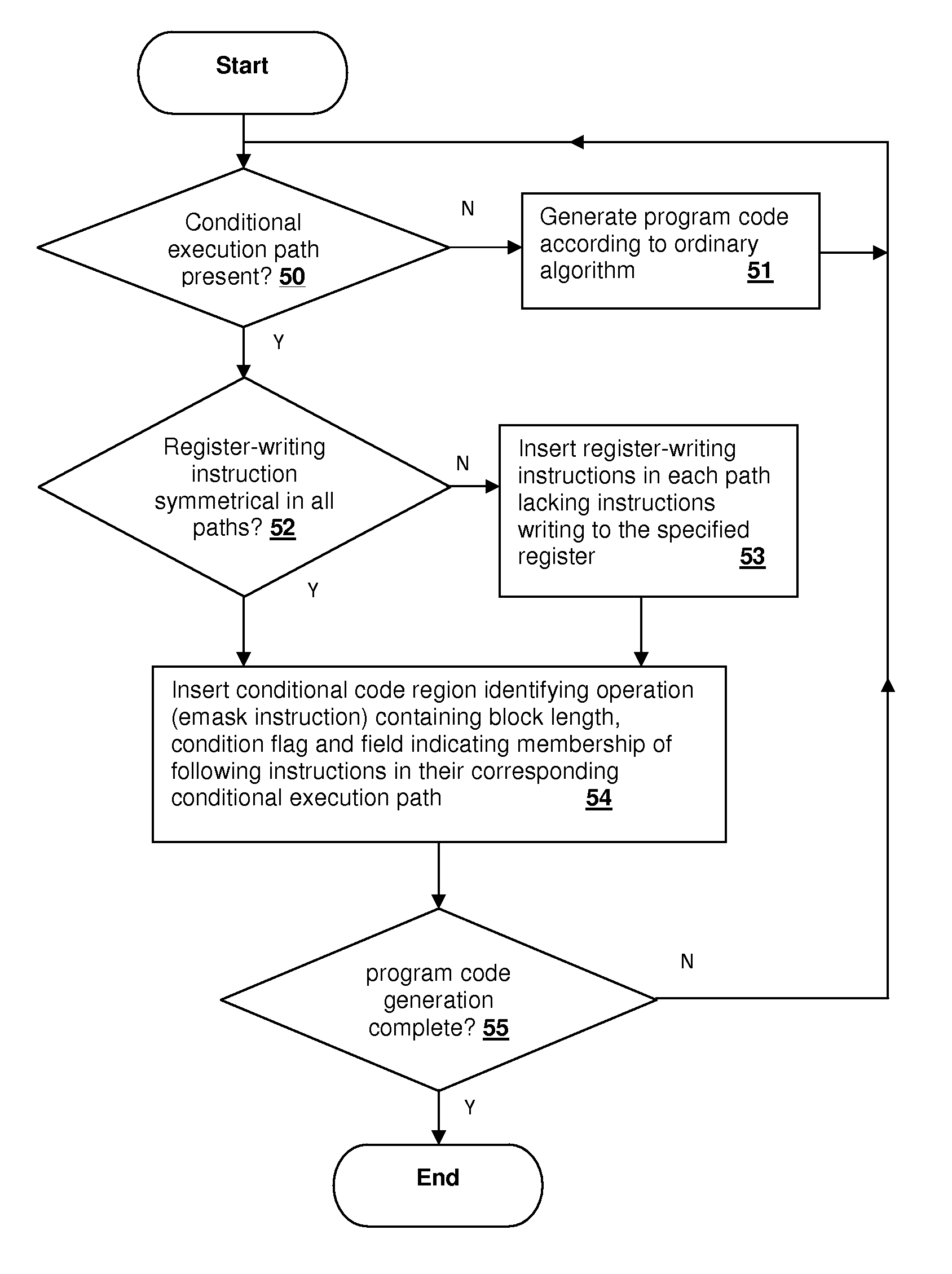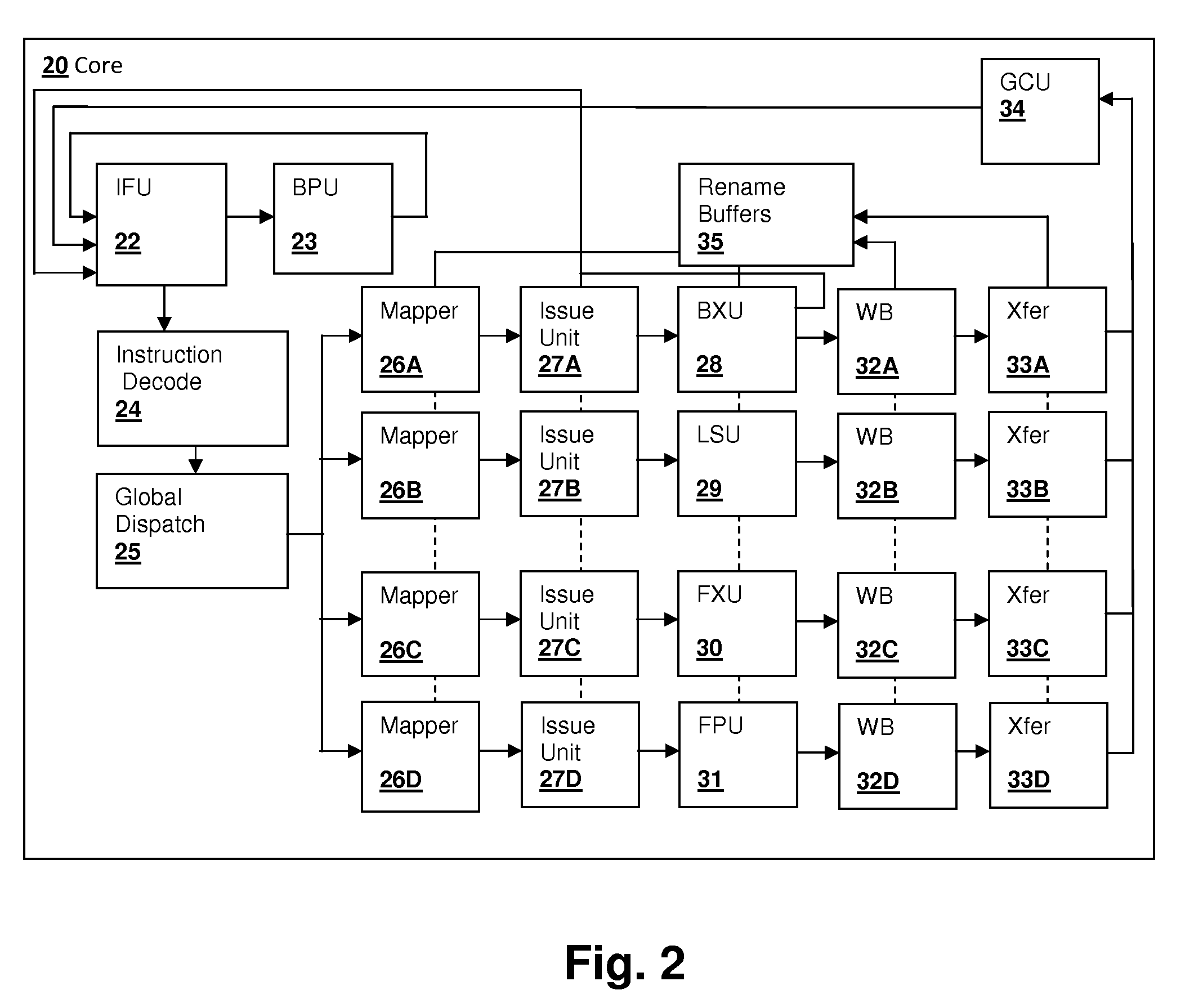Predication support in an out-of-order processor by selectively executing ambiguously renamed write operations
a technology of ambiguous renamed write operations and predication support, which is applied in the field of processing systems and processors, can solve the problems of machine overhead in non-predicated instruction handling, processing must typically stall, and inclusion of predicated suppor
- Summary
- Abstract
- Description
- Claims
- Application Information
AI Technical Summary
Problems solved by technology
Method used
Image
Examples
Embodiment Construction
[0016]The present invention relates to processors and processing systems in which out-of-order instruction processing is supported. A special operation code marks regions of predicated operations that include at least one instruction. Associated with the special operation code, either in fields within the operation code or in an operand, information is included identifying to which conditional path each instruction in the region belongs and the length of the region. Additional register write operations are inserted to assure that symmetrical register write operations (i.e., writes to the same register) are present for each conditional path within the region, forming sets of register write operations. If writes to the same register are present in each of the conditional execution paths, then the writes can be “paired” and no write instruction insertion is needed to provide symmetry. The processor decodes the instructions and may dispatch the instructions to execution units in one or ...
PUM
 Login to View More
Login to View More Abstract
Description
Claims
Application Information
 Login to View More
Login to View More - R&D
- Intellectual Property
- Life Sciences
- Materials
- Tech Scout
- Unparalleled Data Quality
- Higher Quality Content
- 60% Fewer Hallucinations
Browse by: Latest US Patents, China's latest patents, Technical Efficacy Thesaurus, Application Domain, Technology Topic, Popular Technical Reports.
© 2025 PatSnap. All rights reserved.Legal|Privacy policy|Modern Slavery Act Transparency Statement|Sitemap|About US| Contact US: help@patsnap.com



